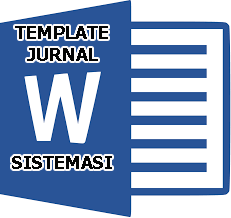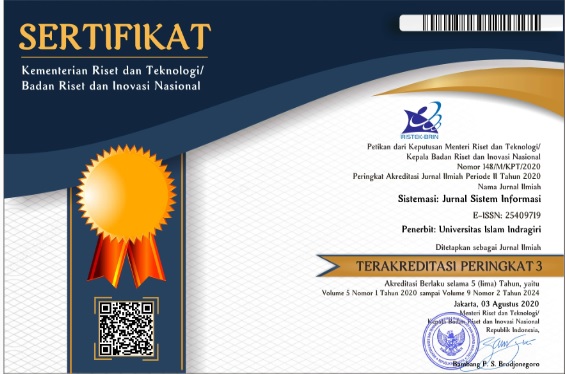Optimizing Sentiment Analysis of Digital Wayang Viewer Comments using SMOTE and the Naïve Bayes Algorithm
Abstract
Keywords
Full Text:
PDFReferences
T. Temu Tradisi and R. Novia Sapphira, "The Meeting Point of Tradition and Modernization: Cultural Adaptation in Preserving Wayang Kulit in the Digital Era," Anthropos: Jurnal Antropologi Sosial dan Budaya (Journal of Social and Cultural Anthropology), vol. 8, no. 2, 2023. [Online]. Available: http://jurnal.unimed.ac.id/2012/index.php/anthropos.
D. Waluyo and R. Rosmawati, "Dinamika Seni Tradisional pada Era Digital Dynamics of Traditional Art in the Digital Age," Majalah Semi Ilmiah Populer Komunikasi Massa, vol. 2, no. 2, pp. 161–172, 2021.
M. Pasaribu, Y. R. Dewi, and W. Oktaviani, "Penggunaan Konten Youtube sebagai Media Komunikasi Pemasaran pada Brand Jakarta Uncensored," Jurnal Cyber PR, vol. 4, no. 1, pp. 29–39, Jun. 2024. ISSN (online) 2798-0561. [Online]. Available: https://journal.moestopo.ac.id/index.php/cyberpr.
J. N. S. Gono and W. N. Rakhmad, “Pandangan Penonton tentang Wayang Kulit di Kanal Youtube,” Biokultur, vol. 10, no. 2, p. 107, Dec. 2021, doi: 10.20473/bk.v10i2.31265.
Badan Pusat Statistik, Statistik Sosial Budaya 2021, Badan Pusat Statistik, Jakarta, Indonesia, 2021. [Online]. Available: https://www.bps.go.id.
M. Z. Alfaqi, "Eksistensi dan Problematika Pelestarian Wayang Kulit pada Generasi Muda Kec. Ringinrejo Kab. Kediri," Jurnal Praksis dan Dedikasi, vol. 5, no. 2, pp. 119–128, 2022. doi: 10.17977/um032v5i2p119-128.
"Lunturnya Minat Generasi Muda terhadap Seni dan Budaya Tradisional Indonesia," Indonesiana. Accessed: Mar. 30, 2024. [Online]. Available: https://www.indonesiana.id/read/133646/lunturnya-minat-generasi-muda-terhadap-seni-dan-budaya-tradisional-indonesia.
W. Warsito and I. Fibiona, Revitalisasi Wayang Kedu, Kabupaten Temanggung, Jawa Tengah, 1st ed. Balai Pelestarian Kebudayaan Wilayah X, 2023.
F. R. Jannah, A. Megiananta Aprilistya, and S. Khadijah, “Analisis Framing Pemberitaan Perseteruan Farida Nurhan dan Food Vlogger Codeblu di Kompas.com dan Viva.Co.Id,” Prosiding Seminar Nasional, pp. 1040–1048, 2023.
C. Jonathan, T. H. Rochadiani, and T. Sofian, "Analisis Sentimen Komentar Video Youtube Flat Earth Theory dengan menggunakan Metode Unsupervised dan Supervised Learning," Decode: Jurnal Pendidikan Teknologi Informasi, vol. 3, no. 2, pp. 378–387, Aug. 2023. doi: 10.51454/decode.v3i2.210.
H. Irsyad and M. R. Pribady, "Klasifikasi Opini terhadap Pertanian Sawit (Palm Oil) Indonesia menggunakan Naïve Bayes," vol. 6, no. 2, 2020. [Online]. Available: http://jurnal.mdp.ac.id.
N. Indurkhya and F. J. Damerau, Handbook of Natural Language Processing, 2nd ed., Chapman & Hall/CRC, Machine Learning & Pattern Recognition Series.
H. Rachmi and A. Surniandari, "Classification of Text Mining Review Oil Diffuser Products using Naive Bayes Classification," Jurnal Mantik, vol. 4, no. 1, pp. 187–192, 2020. [Online]. Available: https://iocscience.org/ejournal/index.php/mantik/article/view/728. [Accessed: Nov. 15, 2024].
"Naive-Bayes Classification Algorithm," [Online]. Available: http://www.convo.co.uk/x02/. [Accessed: Nov. 15, 2024].
I. Rish, "An Empirical Study of the Naïve Bayes Classifier," Université de Montréal, Jan. 2001. [Online]. Available: https://www.researchgate.net/publication/228845263. [Accessed: Nov. 15, 2024].
A A. Karim, S. F. C., and M. Mustafa, "Analisis Sentimen pada Komentar Sosial Media Instagram Layanan Kesehatan BPJS menggunakan Naïve Bayes Classifier," Prosiding Seminar Nasional Konferensi Ilmiah Mahasiswa UNISSULA 7 (KIMU 7), Semarang, Dec. 2021.
K. V. S. Toy, Y. A. Sari, and I. Cholissodin, "Analisis Sentimen Twitter menggunakan Metode Naive Bayes dengan Relevance Frequency Feature Selection (Studi Kasus: Opini Masyarakat mengenai Kebijakan New Normal)," Jurnal Pengembangan Teknologi Informasi dan Ilmu Komputer, vol. 5, no. 11, pp. 5068–5074, Nov. 2021. e-ISSN: 2548-964X. [Online]. Available: http://j-ptiik.ub.ac.id.
M. H. Asnawi, I. Firmansyah, R. Novian, and R. S. Pontoh, "Perbandingan Algoritma Naïve Bayes, K-NN, dan SVM dalam Pengklasifikasian Sentimen Media Sosial," SEMINAR NASIONAL STATISTIKA X (2021), ISSN Cetak: 2087-2590, ISSN Online: 2599-2546. [Online]. Available: http://prosiding.statistics.unpad.ac.id.
M. R. W. Julianto, D. Wasistha, and A. D. Hartanto, "Implementasi Algoritma Support Vector Machine untuk Sentimen Analisis Cyberbullying pada Kolom Komentar Instagram Artis," INTECHNO Journal, vol. 3, no. 2, Dec. 2021. e-ISSN: 2655-1438, p-ISSN: 2655-1632.
A. Ardiyansah and Parjito, "Perbandingan Metode Naïve Bayes dan Support Vector Machine dalam Analisis Sentimen terhadap Tokoh Publik," KLIK: Kajian Ilmiah Informatika dan Komputer, vol. 4, no. 6, pp. 2813–2821, 2024, doi: 10.30865/klik.v4i6.1928.
V. A. Fitri, R. Andreswari, and M. A. Hasibuan, “Sentiment Analysis of Social Media Twitter with Case of Anti-LGBT Campaign in Indonesia using Naïve Bayes, Decision Tree, and Random Forest Algorithm,” in Procedia Computer Science, Elsevier B.V., 2019, pp. 765–772. doi: 10.1016/j.procs.2019.11.181.
L. Ardiani, H. Sujaini, and T. Tursina, “Implementasi Sentiment Analysis Tanggapan Masyarakat terhadap Pembangunan di Kota Pontianak,” Jurnal Sistem dan Teknologi Informasi (Justin), vol. 8, no. 2, p. 183, Apr. 2020, doi: 10.26418/justin.v8i2.36776.
M. R. Amly, Yusra, and M. Fikry, "Penerapan Metode Naïve Bayes Classifier pada Klasifikasi Sentimen terhadap Anies Baswedan sebagai Bakal Calon Presiden 2024," Jurnal Sistem Komputer dan Informatika (JSON), vol. 4, no. 4, pp. 621–631, Jun. 2023. e-ISSN: 2685-998X, DOI: 10.30865/json.v4i4.6214.
DOI: https://doi.org/10.32520/stmsi.v14i3.5002
Article Metrics
Abstract view : 509 timesPDF - 132 times
Refbacks
- There are currently no refbacks.

This work is licensed under a Creative Commons Attribution-ShareAlike 4.0 International License.









